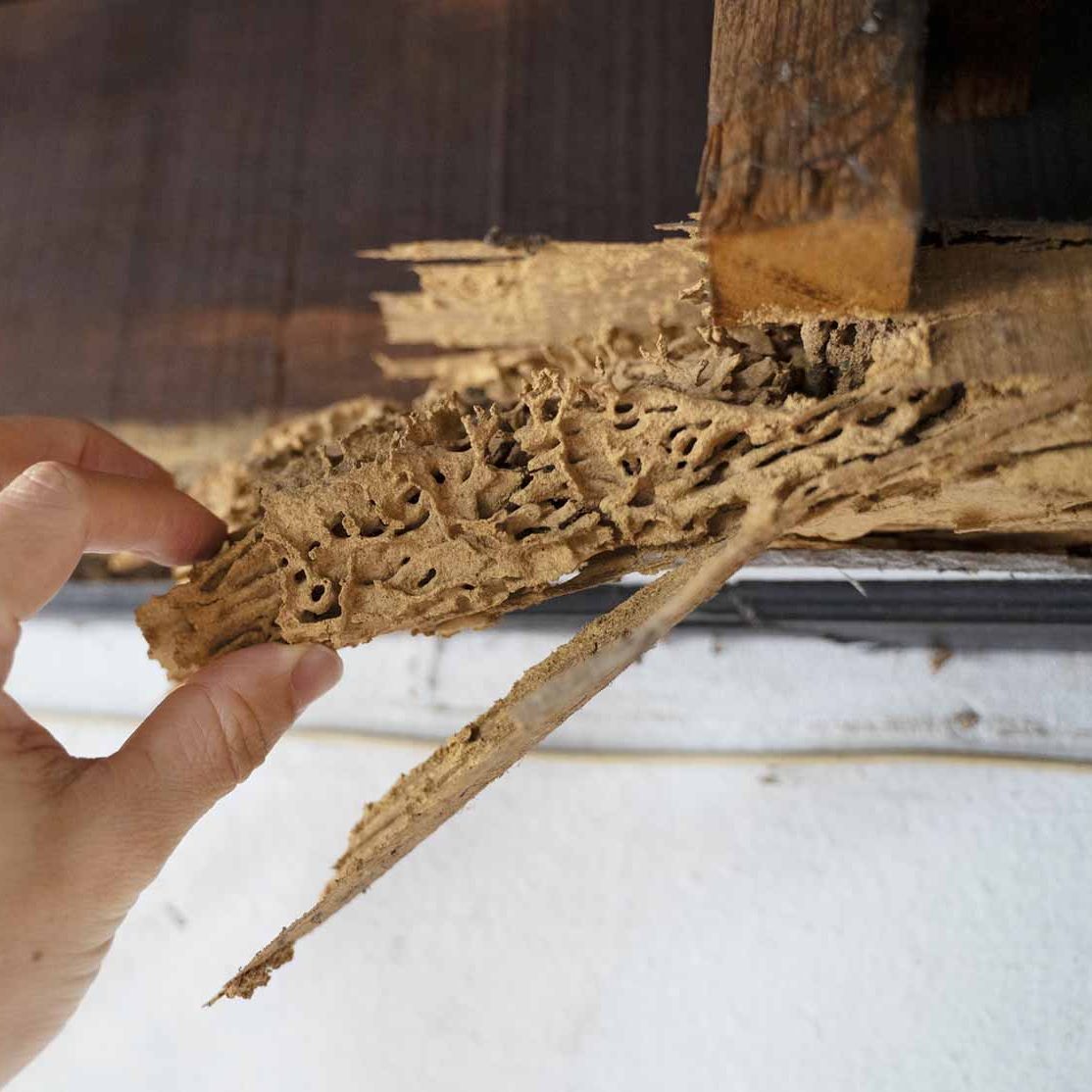Why is Fall a Critical Time for Termite Inspections, and What Steps Can You Take to Protect Your Home?
As the leaves change color and temperatures drop, homeowners in Missouri shift their attention to fall maintenance. One essential task frequently overlooked is checking for termites. Although termites are usually associated with warmer weather, fall is an ideal time to assess your home for these destructive pests and take preventive measures.

Why Fall is the Perfect Time for a Termite Check
Termites are most active in spring and summer but don’t hibernate when the weather cools. Fall offers prime conditions for termites to continue feeding and expanding their colonies, particularly in areas with mild or temperate climates like Missouri. Here are a few reasons why fall inspections are vital:

Termites Can Thrive in Fall Conditions
Moisture is a critical factor in termite survival. Fall brings increased moisture from rain, and as you prepare your home for the colder months, excess moisture around the foundation can provide the perfect environment for termites to thrive. Without proper attention, fall could give termites a much-needed lifeline to continue their infestation into winter.
Late-Term Activity
Termites remain active year-round. During the fall, subterranean termites, the most common species in Missouri, retreat deeper underground as temperatures drop, but they don’t stop feeding. If an established colony is near or inside your home, termites can continue damaging wooden structures even as they prepare for winter.
Identifying Damage Before Winter
As winter approaches, termites become less visible, making detection more difficult. By performing a thorough termite inspection in the fall, you can catch signs of infestation before the colder months, making detection and treatment more challenging. Additionally, termites will often exploit weaknesses in your home’s foundation or structure that worsen during winter, such as cracks or wood that is already damp from fall rains.
Signs of Termite Activity to Look For This Fall
While termites can be elusive and hard to detect, several telltale signs can help you identify a potential problem. During your fall maintenance routine, keep an eye out for the following indicators of termite activity:
- Mud Tubes:
- Subterranean termites construct mud tubes to travel between their colonies and food sources, often wood structures in your home. These tubes, about the width of a pencil, can be found on exterior walls, foundation slabs, or crawlspaces. If you see these mud tubes, it’s a strong sign of termite activity.
- Wood Damage:
- Termites feed on wood from the inside out, leaving it hollow and fragile. You might notice wood that sounds hollow when tapped or appears blistered. Inspect wooden beams, window frames, and exposed wood in basements or attics for signs of damage.
- Discarded Wings:
- Termites shed their wings when they settle into a new location, especially during the swarming season (which often occurs in spring but can extend into fall). Piles of discarded wings near windowsills, doors, or light fixtures can indicate that termites have entered your home.
- Termite Droppings:
- Drywood termites, although less common in Missouri, leave behind tiny, pellet-shaped droppings known as frass. If you find these near wood surfaces or under furniture, it’s a sign of termite infestation.
- Buckling Floors or Sagging Ceilings:
- As termites hollow out structural wood, you might notice spongy or uneven floors. Sagging ceilings or cracked walls can also be signs that termites have weakened the structural integrity of your home.
Why Termite Prevention is Essential in Fall
Preventing termites in fall can save you thousands of dollars in potential repair costs. The National Pest Management Association (NPMA) estimates that termites cause over $5 billion in property damage yearly in the United States alone. Here’s why you should make termite prevention a priority as part of your fall home maintenance:
- Avoiding Costly Repairs:
- Once termites infiltrate your home, they can cause significant damage to wooden structures, including support beams, flooring, and framing. Regular fall inspections help catch infestations early before they result in costly structural damage. By addressing potential issues now, you can avoid a much bigger headache (and expense) in the future.
- Fall is a Good Time for Professional Inspections:
- Many homeowners schedule pest inspections in the spring or summer. Still, professional pest control companies like Titan Pest & Wildlife Solutions are available year-round to inspect your home for termites. Fall is often a less busy time for pest control services, so it’s a great opportunity to schedule a thorough termite inspection without long wait times.
- Preventing Termites from Entering During Winter:
- Termites can survive winter if they have established colonies near or inside your home. Sealing cracks in your foundation and addressing moisture issues during fall make it harder for termites to find entry points and food sources in your home during the colder months.
Tips on Prevent Termite Infestations During Fall Maintenance
There are several practical steps homeowners can take during their fall maintenance to reduce the risk of termites:
- Seal Entry Points:
- Check your home’s foundation, windows, and doorframes for any cracks or gaps where termites could enter. Seal these areas with caulk or other appropriate materials to prevent termite access.
- Remove Excess Moisture:
- Termites thrive in moist environments. Clear leaves and debris from gutters and downspouts to prevent water from accumulating around your home’s foundation. Fix any leaks, especially in basements or crawlspaces, and ensure proper ventilation to reduce humidity.
- Store Firewood Away from the House:
- Firewood is a magnet for termites. Keep woodpiles at least 20 feet from your home, and elevate them off the ground if possible. This will reduce the chances of termites migrating from the woodpile to your home’s wooden structures.
- Keep Mulch Away from Your Foundation:
- While mulch is a popular landscaping material, it can attract termites when placed too close to your home. To reduce the risk of termite infestation, ensure that mulch is kept at least 15 inches from your foundation.
- Regular Inspections:
- Even if you don’t suspect an infestation, it’s a good idea to schedule regular termite inspections as part of your home’s maintenance routine. Professional termite inspections can catch early signs of activity and provide targeted treatments to prevent future infestations.
Contact us Today to Protect Your Home
Fall is the perfect time to check your home for termites. As you perform your seasonal maintenance tasks, don’t forget to include a thorough termite inspection on your list. By staying proactive and addressing potential issues early, you can protect your home from these destructive pests year-round.
Don’t hesitate to contact Titan Pest & Wildlife Solutions. Our team is ready to provide termite inspections and treatments to keep your home safe and termite-free.

